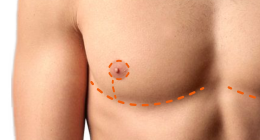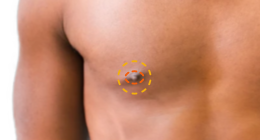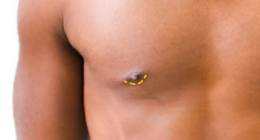Sponsored Article
 Top Surgery Recovery - What To Expect
Top Surgery Recovery - What To Expect
Not surprisingly, some of the most common questions about Top Surgery revolve around what recovery is like. Overall, Top Surgery recovery is usually pretty smooth sailing but that's not to say that there aren't risks and potential complications. It's a major surgery and it's important to follow your surgeon's post-operative instructions and give yourself the time and space for proper healing.
How Long Does Top Surgery Take?
According to Dr. Josef Hadeed, a Top Surgery expert who practices in both Beverly Hills and Miami, the time needed to complete Top Surgery depends on how much breast tissue needs to be removed, which Top Surgery method is used, and if any contouring with liposuction is needed. Generally speaking, Top Surgery takes about 2-4 hours to complete.
Waking Up After Surgery
After surgery, you'll wake up in the recovery room, where a nurse will monitor your vital signs. There may be other patients in the room and it can be noisy with the sounds of beeping machines and people shuffling around. As you come out of the anesthesia, you might experience nausea, grogginess or confusion and this can take a few hours to wear off. PRO TIP: Request a scopolamine patch or QueaseEase aromatherapy patch to treat nausea.
Leaving the Facility
Most Top Surgeries are done on an outpatient basis. Overnight hospital stays are only required if there are other health concerns that need to be monitored, such as respiratory conditions, bad reactions to anesthesia or a history of blood clots. Once it's deemed safe, you'll be able to leave the clinic and go to where you're spending your recovery.
Important: You will need someone to accompany when you leave the facility and they will need to stay with you for 24hrs.
If you're traveling for surgery, your surgeon will want you to stay in town for at least a week so that they can monitor your recovery. Dr. Hadeed explains:
Pain Management
The first couple of days of recovery are usually the most uncomfortable. In addition to experiencing side effects from anesthesia, you might also have swelling and bruising, pain from incisions, and tightness and chafing from wearing the compression garment. While many surgeons prescribe opioid pain killers such as hydrocodone (Vicodin) or oxycodone (OxyContin, Percocet) for pain management, these drugs can contribute to constipation, adding to your discomfort. Many people who have Top Surgery are able to take just Tylenol for pain. That said, it's important to stay on top of pain because being in pain can slow down your recovery, so don't try to be a hero by not taking anything for pain.
Icing is also helpful in reducing pain, swelling and bruising after Top Surgery. Some surgeons advise against icing nipple grafts so be sure to discuss how to ice safely with your surgeon.
You'll need to sleep on your back while recovering from Top Surgery. This can be difficult for those who are side- or stomach-sleepers and some people find it easier to sleep in a recliner rather than in a bed. You might also find it helpful to start training yourself to sleep on your back in the weeks before surgery, even if it's just for a portion of your sleep time.
The Big Reveal
About 1 week after surgery, you'll see your surgeon for a post-op appointment. The dressings will be removed and you'll get to see your new chest for the first time. "The Big Reveal" is an exciting part of recovery!
"On March 1st I had Top Surgery done with Dr. Josef Hadeed in LA. On March 7th I got my bandages off and was able to see my chest for the first time. It was such an emotional moment! All of this feels so unreal."
Any extra swelling that's present will usually go down within 2-3 weeks but it can take up to 6 months, so you'll need to be patient as your chest heals into its final shape.
Limiting Physical Activity
People often feel better than they expect during Top Surgery recovery and while it's tempting to get out and get active it's important that you follow your surgeon's recommendations about physical activity after surgery. Walking is recommended as it gets your lymphatic system stimulated, which helps your immune system fight off infections. Activities that you should avoid include anything that causes you to lift your hands above your head, which can stretch out your incisions leading to more visible scarring. You should wait 6-8 weeks minimum before going back to the gym. Heavy chest workouts should be avoided for even longer, up to 3 months.
Taking Time Off Work or School
You'll definitely need to take time off work or school to recover from Top Surgery. The amount of time you'll need to take off depends on the type of job that you have. Dr. Hadeed explains:
Getting Back to Normal
The best things that you can do to speed up your recovery are to rest, maintain a healthy diet, and refrain from smoking (tobacco and cannabis) and drinking alcohol. Throughout your recovery, be sure to listen to your body and if something doesn't feel right don't hesitate to contact your surgeon's office and ask about it. Your surgeon would much prefer that you "bug them" with questions rather than stay silent about something that could turn into a complication.
By 8 weeks post-op you should be feeling well recovered. That might seem like a long timeline, but if you follow your surgeon's guidelines for recovery and take it easy after your surgery, you'll hit this milestone before you know it!
Related:
- Frequently Asked Questions About Top Surgery Recovery and Post-Op Care
- How To Take Care of Top Surgery Drains
Last updated: 11/14/2022




